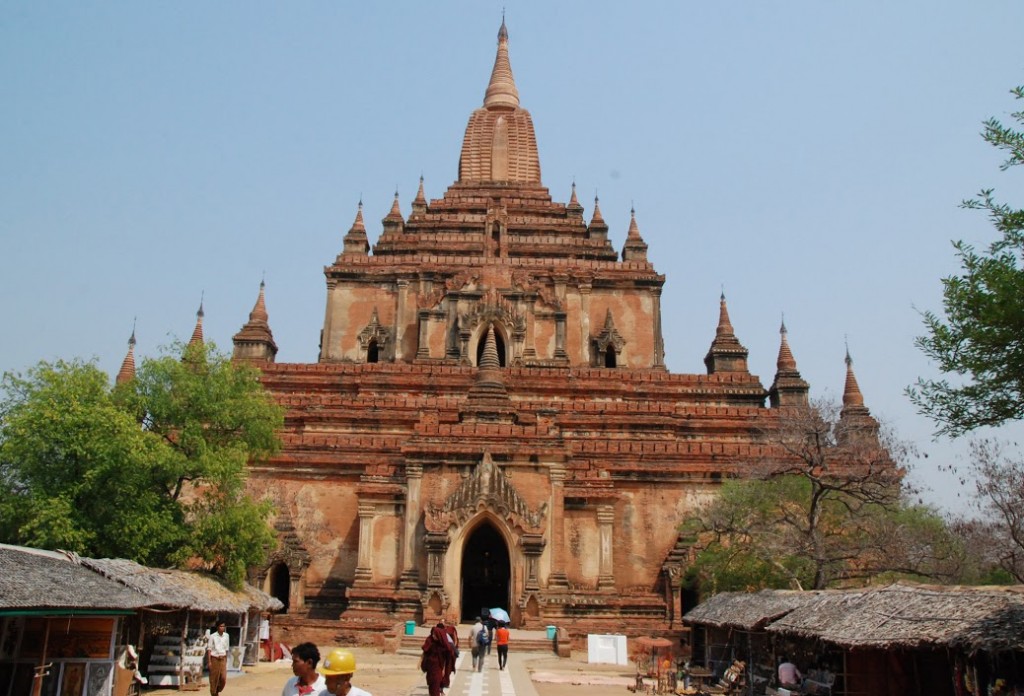Sulamani
The Sulamani temple dates to 1183 based on a stone inscription found in the structure’s northern entrance hall. This two-storied temple resembles other enormous temples, such as Thatbyinnyu, Gawdawpalin, and Htilominlo,etc. The temple similarly sits within a walled enclosure or compound. Glazed ceramic insets can be seen on the base and terraces of the brick structure. The plaques are yellow and green, but the yellow glazes appear to be poorer in quality than that seen on the plaques of Htilominlo. The interior walls and vaults contain murals, but contemporaneous 12th-century murals appear to be confined to the vaulted ceilings. The walls are decorated by murals dating to at least two periods: late Nyaung Yan and early Konbaung. It is likely that the temple has undergone various stages of restoration work in precolonial times. Entry to the upper story is no longer possible for both safety and conservation reasons. On the south side corridor can be found murals containing numerous subjects including scenes of hell.
Click on the photo below to enlarge gallery.


